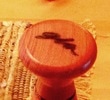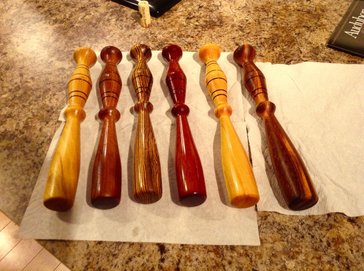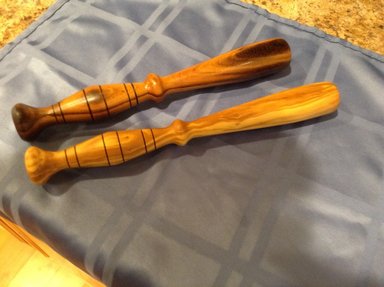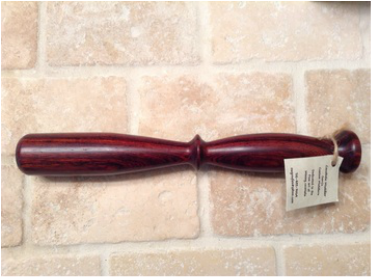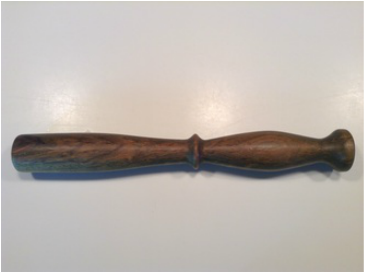Different Kinds of Wood
Most of my muddlers are made from these wood types: Bocote, Osage Orange from Argentina, Chechen (Caribbean Rosewood), Goncalo Alves (Tiger Wood), Bolivian Rosewood and Bloodwood. I recently made several muddlers from a wood that is local to where I now live (Phoenix) - Mesquite. Mesquite is beautiful, hard and has a fascinating history of adapting to the harsh desert climate. I will make more as I find suppliers.
Periodically I also make a limited number of special-order muddlers made from other wood like African Blackwood, Olive Wood, Brazilian Ebony, Indian Ebony and Cocobolo.
Periodically I also make a limited number of special-order muddlers made from other wood like African Blackwood, Olive Wood, Brazilian Ebony, Indian Ebony and Cocobolo.
EXAMPLES OF MUDDLERS AND WOOD TYPES
Osage Orange from Argentina
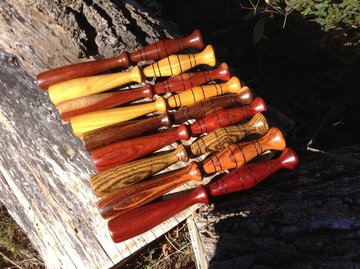
The second and fourth mudders from the top are Argentine Osage Orange. The tree that provides this beautiful orange wood grows throughout central and South America. It is very different than the variety commonly grown across the central U.S. as hedges and fences. The variety we use is very hard (2400 on Janka scale) - twice as hard as Black Walnut.
Osage Orange is beautiful, ranging from light orange to robust brown colors with a wavy and interlocking grain patterns. The wood holds its color and integrity extremely well.
Osage Orange is beautiful, ranging from light orange to robust brown colors with a wavy and interlocking grain patterns. The wood holds its color and integrity extremely well.
Bloodwood (Cardinal Wood)
Bocote Wood |
The Bloodwood muddler is fourth from left. It is very hard, (2900 on international Janka Hardness Scale. The wood has a bright and deep red color accented at times with variegated yellow and black stripes.
|
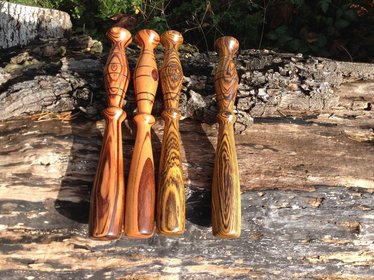
The two on the right were made from Bocote. The grain varies from the straight to wildly curved throughout it’s golden brown to tan color. Dark curved streaks of black accent the wood.
It polishes nicely. The wood has been used for such things as pool cues and knife handles. It grows throughout Mexico and also in West Indies.
Its high density (heavy weight) makes the muddler feel powerful as you make drinks.
It polishes nicely. The wood has been used for such things as pool cues and knife handles. It grows throughout Mexico and also in West Indies.
Its high density (heavy weight) makes the muddler feel powerful as you make drinks.
BOCOTE MUDDLER
Chechen Wood
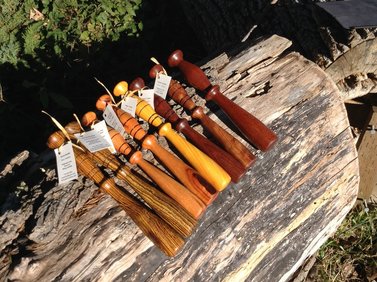
The Chechen Wood muddler is the second from the top right. Chechen (Caribbean Rosewood) has a wonderful varied color pattern ranging from red to orange to light butterscotch with blackish stripes.
It has a fine texture so it turns and polishes well.
Chechen grows in Eastern Mexico, Cuba, the Dominican Republic and Belize. It reaches the height of between 50 and 115 ft.
It has a fine texture so it turns and polishes well.
Chechen grows in Eastern Mexico, Cuba, the Dominican Republic and Belize. It reaches the height of between 50 and 115 ft.
Goncalo Alves or Tiger Wood
Cocobolo Wood
|
Cocobolo is a highly sought after hard wood that grows mainly throughout Central America. The heart wood (which we use) contains a kaleidoscope of colors ranging from yellow through orange and red and into shades of brown - with streaks of black. It is fairly hard (1136 of the Janka scale) - about as hard as Birch and extremely dense (sinks in water) with a fine texture that can be polished into a lustrous finish. It’s high oil content makes it especially resistant to water but makes the application of our oil finishes challenging. It has become quite rare due to the high demand for it but as yet has not been put on the endangered list.
We use this wood only occasionally. |
Cumaru (Brazilian Teak)
|
Cumaru (Brazilian Teak) is a beautiful hardwood ranging in color from medium to dark brown-tending to red with purple hues. It has a fine texture and polishes to a high gloss. It is one of the hardest woods in the world (3540 on Janka Scale) - three times harder than Hard Maple. Its high density (specific gravity of .86) makes it feel strong in your hand. It grows throughout Northern South America.
|
